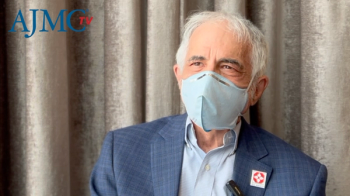
Prostate-Specific Antigens Post Salvage Radiotherapy Predict Survival Outcomes of Patients With Recurrent Prostate Cancer
Following prostatectomy in patients with recurrent prostate cancer, researchers analyzed post–salvage radiotherapy prostate-specific antigen (PSA) values and the percentages of PSA decline to anticipate patient survival rates.
In patients with
This study gathered data from 2000 to 2011 to analyze 164 patients with recurrent prostate cancer to determine if early PSA parameters after SRT were linked to clinical outcomes and could predict post-SRT clinical failure or biochemical failure-free survival (BCFFS).
Researchers examined patients who had been treated with SRT alone. Any patients who underwent androgen deprivation therapy before or within 1 month of ending SRT were excluded. Patients had a median age of 66 years and a median pre-SRT PSA nadir of 0.41 ng/mL.
Prior to November 2008, all patients received 3-dimensional conformal radiotherapy (RT). After November 2008, patients received intensity-modulated RT. SRT was applied to the prostate fossa and the retrovesical region. PSA values were examined 1 month after the onset of SRT and then every 3 weeks following. A survival analysis was carried out with a PSA reference value of 0.2 ng/mL at the time of the second follow-up post SRT (4 months). Researchers set a PSA percent decline of 0.45 as the CRFS cut-off value.
Median follow-up time was 53.4 months. The clinical recurrence-free survival rate (CRFS) at 5 years was 87.9% and the median recurrence time following SRT was 37.1 months.
A PSA percent decline greater than or equal to 0.45 was seen as a negative predictor of CRFS post SRT (P = .002) and was also linked to worse BCFFS. A PSA value of at least 0.2 ng/mL at the 4-month mark post SRT (P = .013) was also a negative predictor of CRFS after SRT. CRFS was reported at 92.1% at 4 months in patients with PSA levels under 0.2 ng/mL and 93.4% in patients with a percent decline under 0.45, whereas patients with a PSA of at least 0.2 ng/mL had a 76.3% CRFS rate (P = .025) and those with a percent decline of at least 0.45 had a CRFS rate of 71.5% (P = .001).
Limitations of this study, authors noted, included its shorter follow-up periods, the retrospective nature of their analysis, and the fact that the number of prostate cancer deaths was too low to indicate any significant early PSA parameters for prostate cancer–specific survival.
The investigators wrote that theirs is the first study to demonstrate the importance of early post-SRT PSA values in predicting survival outcomes in patients with recurrent prostate cancer. “Patients with delayed [PSA] decrease,” the authors concluded, “should be carefully observed for clinical recurrence.”
Reference
Chang JH, Park W, Park JS, et al. Significant of early prostate-specific antigen values after salvage radiotherapy in recurrent prostate cancer patients treated with surgery. Int J Urol. 2015;22(1):82-87. doi:10.1111/iju.12604
Newsletter
Stay ahead of policy, cost, and value—subscribe to AJMC for expert insights at the intersection of clinical care and health economics.

















































